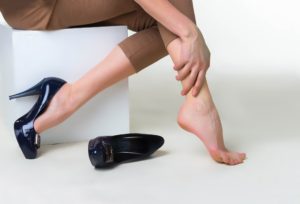 Veins are an essential part of the circulatory system. They are responsible for returning blood to the heart to be reoxygenated. When there is a problem with the veins, the ability to return blood back to the heart becomes impaired. This commonly triggers varicose veins – the unsightly blueish veins that appear bulging on the legs. This results in blood pooling in the legs, causing them to feel heavy, itchy, swollen, and achy.
Veins are an essential part of the circulatory system. They are responsible for returning blood to the heart to be reoxygenated. When there is a problem with the veins, the ability to return blood back to the heart becomes impaired. This commonly triggers varicose veins – the unsightly blueish veins that appear bulging on the legs. This results in blood pooling in the legs, causing them to feel heavy, itchy, swollen, and achy.
Most of the time, varicose veins aren’t something serious, but depending on the symptoms you experience, you may choose to treat them. You may also choose to treat them simply to reduce their appearance.
Advertisement
Advances in medicine have greatly improved treatment methods for varicose veins. Treatment is now less invasive, and recovery is quick.
There are steps you can take to improve your vein health and reduce your risk of varicose veins. These prevention tips include:
- If you do need to sit for prolonged periods, try to move your legs as much as possible, by either lifting them or flexing your foot.
- Try to get up as much as possible to avoid prolonged sitting.
- While standing, pivot back and forth or perform calf raises to keep your legs moving.
- Wear compression socks
It’s also important to eat a healthy diet and exercise regularly to improve your circulatory system. Undergo regular checkups, especially if you have risk factors for heart problems, to further reduce your risk.
